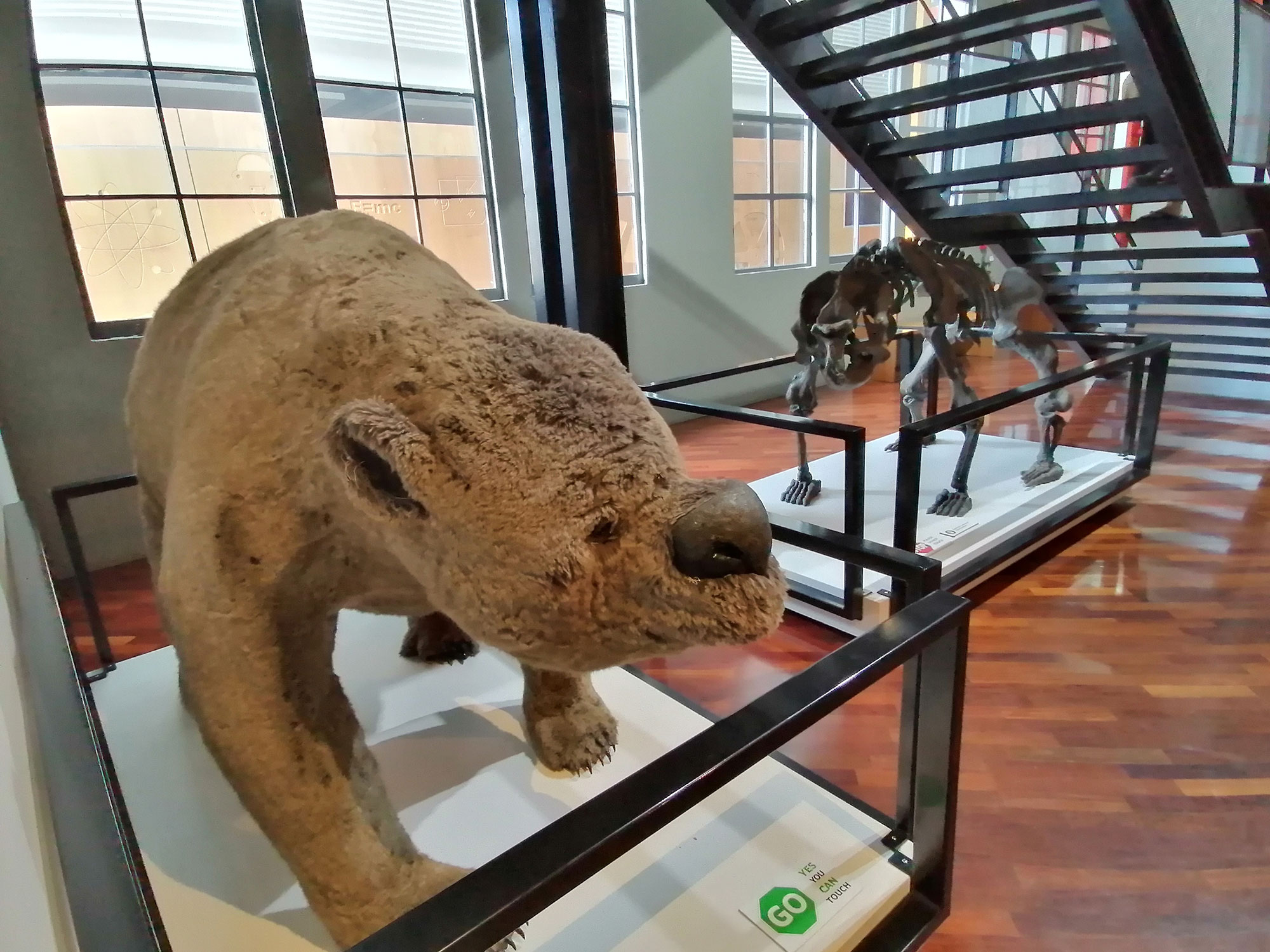While working in the Mowbray Swamp, (now called Mella near Smithton) in 1910, Mr Ernest Carrington Lovell made an exciting discovery of animal bones. They were later identified as belonging to Zygomaturus trilobus, a close relative of Diprotodon, an extinct giant, lumbering herbivore and the largest of all marsupials.
As part of his investigation, Mr Lovell sent a letter to the Curator of the Victoria Museum (now the Queen Victoria Museum and Art Gallery) in Launceston, reporting his discovery. He wrote:
When ditching [digging a ditch] in the Mowbray Swamp about five feet [1.5 metres] below the surface, I came across the remains of a large animal.
The leg bones and shoulder blades evidently belonged to a large quadruped about the size of a horse. The lower jaws, which are very massive, are like those of a marsupial having two, large teeth in front.
The back teeth are very similar to those of the horse but are somewhat larger. The joints of the backbone vary in size, those at one extremity, (the lower, I think) being about double the size of those at the others. The head is somewhat similar in shape to that of a badger, and about the size of a bullock’s head.
Most of the bones are in a very fair state of preservation, but the head is somewhat broken. As the yet, I have not got all the bones, but have no doubt that most of the missing parts could be found by further excavation.
Can you tell me from the above description? If any, similar animal is at present in existence, or if the skeleton is likely to belong to some type, that is now extinct?
This letter was shown to the curator of the museum, Mr H. H. Scott, who commented:
Naturally, until one can get to handle the remains, it is quite impossible to give a detailed classification; but from the very accurate description supplied, I have no doubt the bones are those of an extinct marsupial, Diprotodon of the Tertiary period.
If this is eventually proved, as I think it will be, it settles once and for all the question of a land connection between Australia and Tasmania as late, perhaps as the ‘Pleistocene’ at least.
I have suspected for some years that the remains of these gigantic marsupials were buried in our strata, and from very exact information supplied me by Mr Adye Douglas, of Winkleigh, I am convinced that a skull of Diprotodon was dug up from that district some 30 years ago. This skull actually found its way to Launceston but getting apparently into the hands of Goths and Vandals, was lost to science.
Through the researches of Mr. James McKee Bowling of King Island, the Tertiary mammals have been as near to us as that portion of the old land connection; and now if Mr. Lovell’s specimen is what I think it to be, the last link in the chain is completed, and we have a new chapter of Tertiary geological and paleontological history to write.

Reconstruction of Zygomaturus in QVMAG (photo: G. McLean)
You can see the skeleton of Zygomaturus trilobus discovered by Mr Lovell and its modern replica (affectionately known as ‘Zyggie’) on display at the Queen Victoria Museum at Inveresk.
